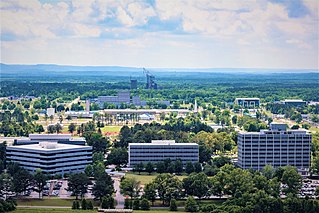
The George C. Marshall Space Flight Center (MSFC), located in Redstone Arsenal, Alabama, is the U.S. government's civilian rocketry and spacecraft propulsion research center. As the largest NASA center, MSFC's first mission was developing the Saturn launch vehicles for the Apollo program. Marshall has been the lead center for the Space Shuttle main propulsion and external tank; payloads and related crew training; International Space Station (ISS) design and assembly; computers, networks, and information management; and the Space Launch System (SLS). Located on the Redstone Arsenal near Huntsville, MSFC is named in honor of General of the Army George C. Marshall.

Nancy Jan Davis is a former American astronaut. A veteran of three space flights, Davis logged over 673 hours in space. She is now retired from NASA.

The John C. Stennis Space Center (SSC) is a NASA rocket testing facility in Hancock County, Mississippi, United States, on the banks of the Pearl River at the Mississippi–Louisiana border. As of 2012, it is NASA's largest rocket engine test facility. There are over 50 local, state, national, international, private, and public companies and agencies using SSC for their rocket testing facilities.

Alexander A. McCool Jr. was manager of the Space Shuttle Projects Office at the NASA George C. Marshall Space Flight Center in Huntsville, Alabama. During his career, McCool contributed to several space developments including the Apollo Program, Skylab and the Space Shuttle program.
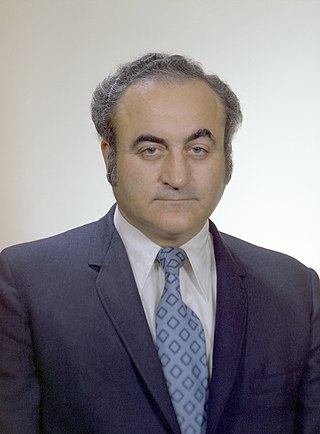
Rocco Anthony Petrone was an American mechanical engineer, U.S. Army officer and NASA official. He served as director of launch operations at NASA's Kennedy Space Center (KSC) from 1966 to 1969, as Apollo program director at NASA Headquarters from 1969 to 1973, as third director of NASA's Marshall Space Flight Center from 1973 to 1974, and as NASA Associate Administrator from 1974 until his retirement from NASA in 1975.

Eberhard Friedrich Michael Rees was a German-American rocketry pioneer and the second director of NASA's Marshall Space Flight Center.
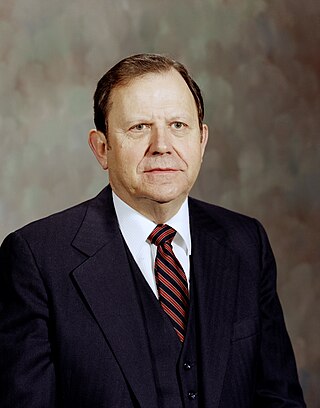
William R. Lucas was the fourth Director of the NASA Marshall Space Flight Center. He served as director from June 15, 1974, to July 3, 1986.

James Robert Thompson Jr., known as J.R. Thompson, was the fifth director of the NASA Marshall Space Flight Center located in Huntsville, Alabama. He served as director from September 29, 1986, to July 6, 1989. Thompson also served as NASA's deputy director from July 6, 1989, to November 8, 1991.
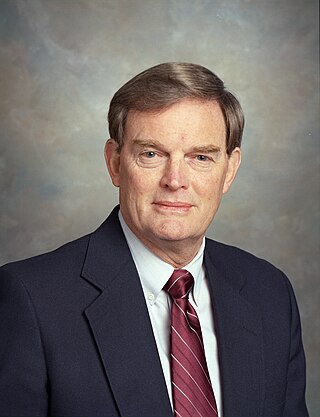
Thomas Jack Lee was the sixth Director of the NASA Marshall Space Flight Center in Huntsville, Alabama, from July 6, 1989 to January 6, 1994.

Arthur G. Stephenson was the ninth Director of the NASA Marshall Space Flight Center located in Huntsville, Alabama. He served as director from September 11, 1998, to May 2003.
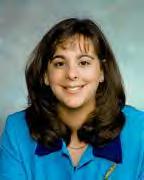
Monserrate Román a.k.a. "Monsi", is a Puerto Rican scientist in NASA who helped NASA build part of the International Space Station. She is the Chief Microbiologist for the Environmental Control and Life Support System project who determines how microbes will behave under different situations and in different locations, such as the nooks and crannies of the Space Station.

The Redstone Test Stand or Interim Test Stand was used to develop and test fire the Redstone missile, Jupiter-C sounding rocket, Juno I launch vehicle and Mercury-Redstone launch vehicle. It was declared an Alabama Historic Civil Engineering Landmark in 1979 and a National Historic Landmark in 1985. It is located at NASA's George C. Marshall Space Flight Center (MSFC) in Huntsville, Alabama on the Redstone Arsenal, designated Building 4665. The Redstone missile was the first missile to detonate a nuclear weapon. Jupiter-C launched to test components for the Jupiter missile. Juno I put the first American satellite Explorer 1 into orbit. Mercury Redstone carried the first American astronaut Alan Shepard into space. The Redstone earned the name "Old Reliable" because of this facility and the improvements it made possible.

The Saturn V dynamic test vehicle, designated SA-500D, is a prototype Saturn V rocket used by NASA to test the performance of the rocket when vibrated to simulate the shaking which subsequent rockets would experience during launch. It was the first full-scale Saturn V completed by the Marshall Space Flight Center (MSFC). Though SA-500D never flew, it was instrumental in the development of the Saturn V rocket which propelled the first men to the Moon as part of the Apollo program. Built under the direction of Dr. Wernher von Braun, it served as the test vehicle for all of the Saturn support facilities at MSFC.

Axel Roth was born in Darmstadt, Germany, on October 25, 1936. He was the son of Ludwig Roth, an original member, of the German Rocket Team. He survived World War II, RAF bombing of rocket development facility at Peenemünde, Germany, August 17–18, 1943, known as Operation Crossbow. He arrived in the US in New York City, NY in 1946, a year after his father arrived there as part of Operation Paperclip, aboard a converted troop transport. He moved first to Ft. Bliss, Texas, and then to Huntsville, Alabama in 1950 when the German Rocket Team was relocated to Redstone Arsenal, Alabama.

Robert M. Lightfoot Jr. is former Acting Administrator of the National Aeronautics and Space Administration (NASA), serving from January 20, 2017 until April 23, 2018. Succeeding Charles Bolden, Lightfoot became the space agency's acting Associate Administrator on March 5, 2012. That job became permanent on September 25, 2012. He had previously served as the eleventh Director of the NASA Marshall Space Flight Center in Huntsville, Alabama, from March 2009 until his promotion in March 2012. On March 12, 2018 he announced his retirement from NASA effective April 30, 2018.

Dynetics is an American applied science and information technology company headquartered in Huntsville, Alabama. Its primary customers are the United States Department of Defense (DoD), the United States Intelligence Community, and National Aeronautics and Space Administration (NASA).
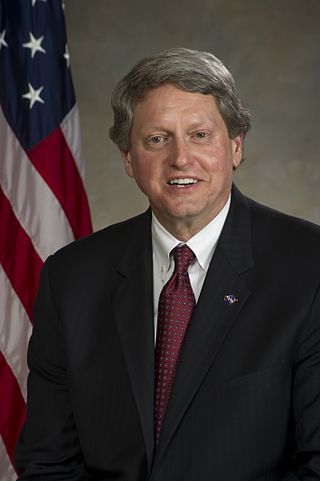
Arthur Eugene "Gene" Goldman is the executive director for Aerojet's Southeast Space Operations division. Before retiring from NASA in August 2012, he last served as acting director of the Marshall Space Flight Center located in Huntsville, Alabama. He was appointed as acting director effective March 5, 2012, following the promotion of the previous director, Robert M. Lightfoot, Jr., to Acting Associate Administrator of NASA.
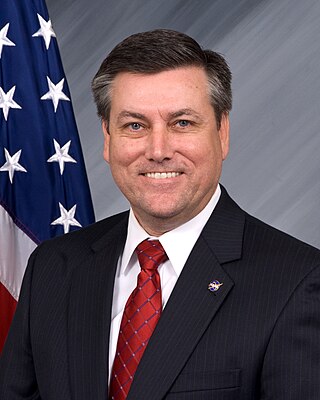
Patrick Scheuermann is the former Director of the NASA Marshall Space Flight Center located in Huntsville, Alabama. He was named to become the center's twelfth director on September 25, 2012. He succeeds Robin Henderson, who had served as acting director for the preceding two months. Scheuermann served as the director of the John C. Stennis Space Center near Bay St. Louis, Mississippi from March 2010 until his appointment to Marshall. Earlier in his NASA career, he served as legislative fellow to Senate Majority Leader Trent Lott.
James B. Odom is an American aerospace engineer and NASA official. He served as director for several major programs at the Marshall Space Flight Center, including the Space Telescope and the Space Station. For his career, he was the recipient of NASA's Exceptional and Distinguished Service Medals.

Charles A. Lundquist was an early NASA scientist and program director. He managed research on satellites and rockets at the Army Ballistic Missile Agency, Marshall Space Flight Center, and Smithsonian Astrophysical Observatory. After retirement, Lundquist devoted his time to collecting and documenting early space program history, particularly that surrounding German rocket scientists in Huntsville, Alabama.


















